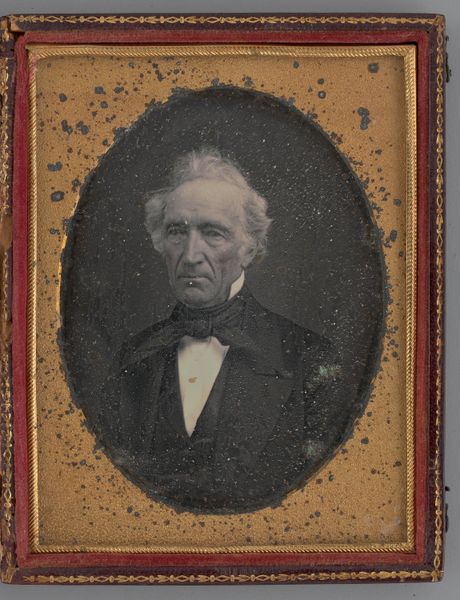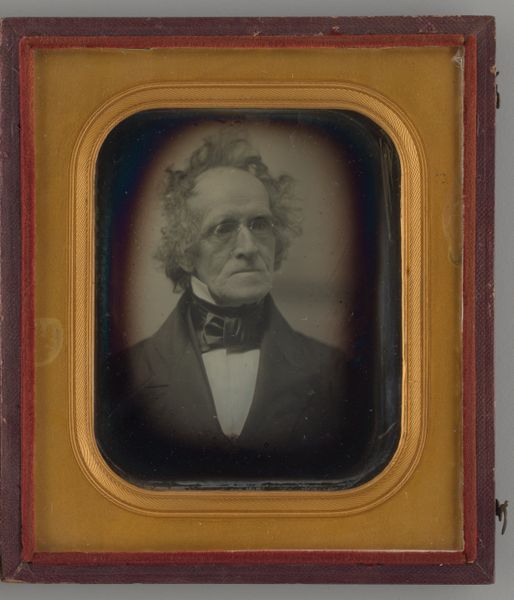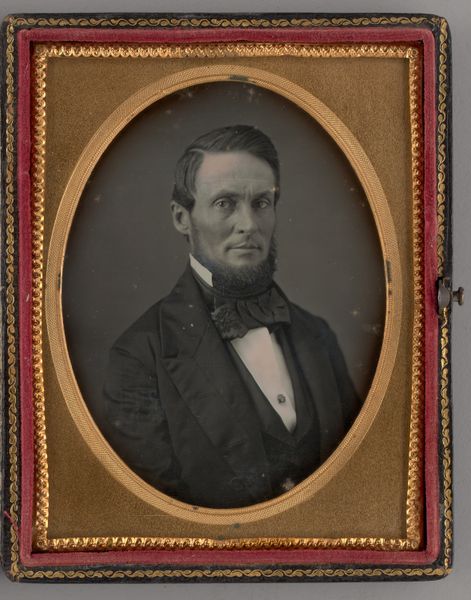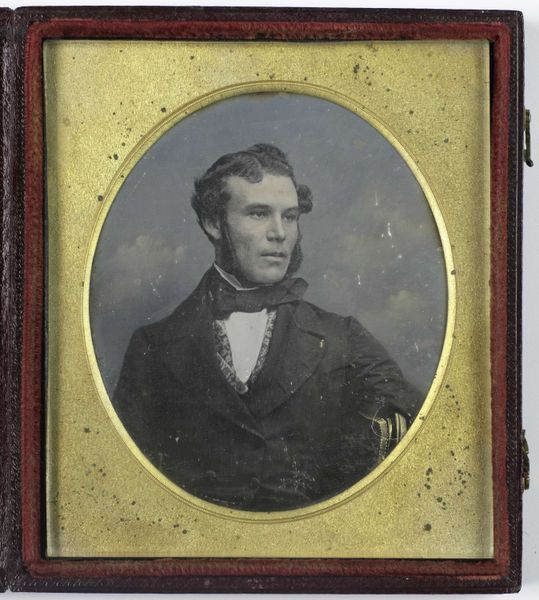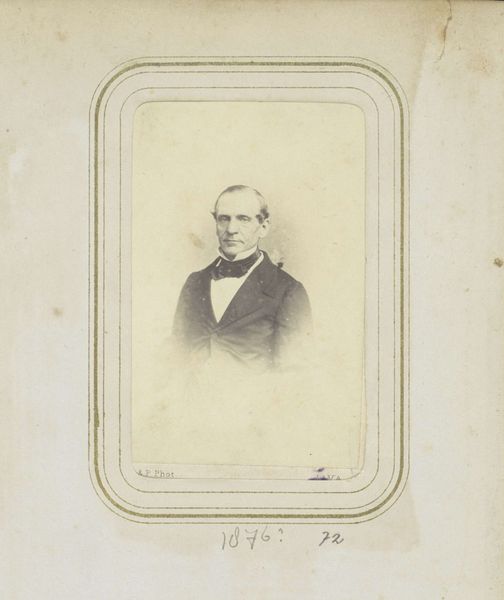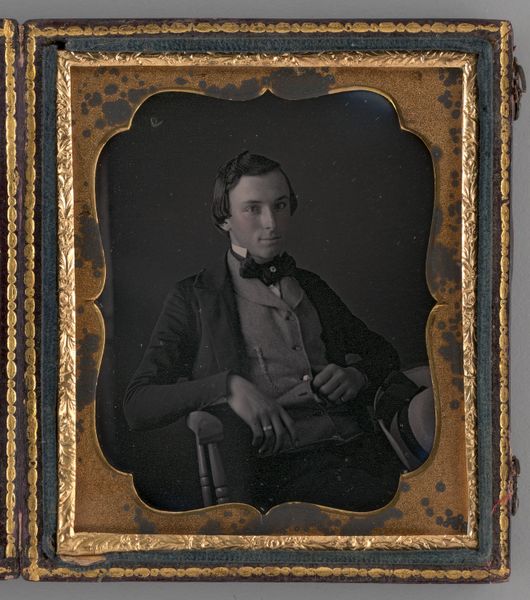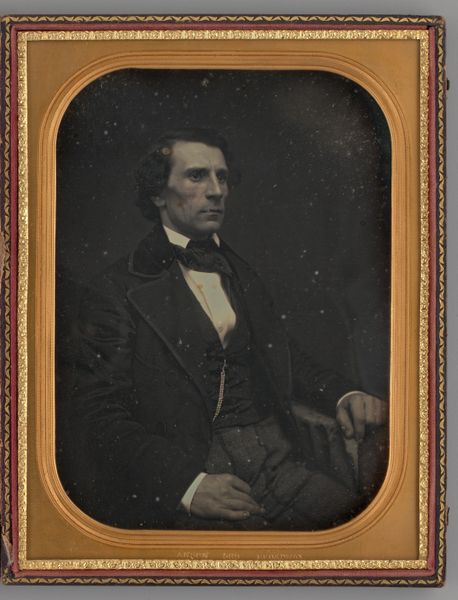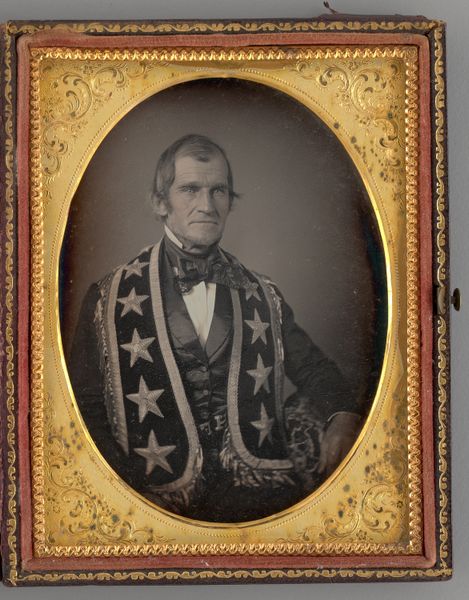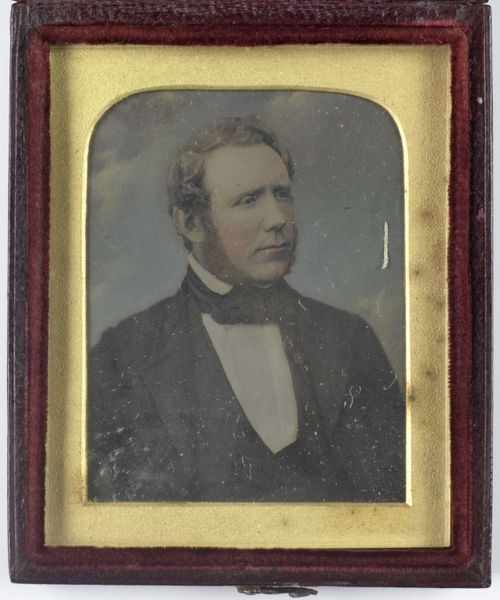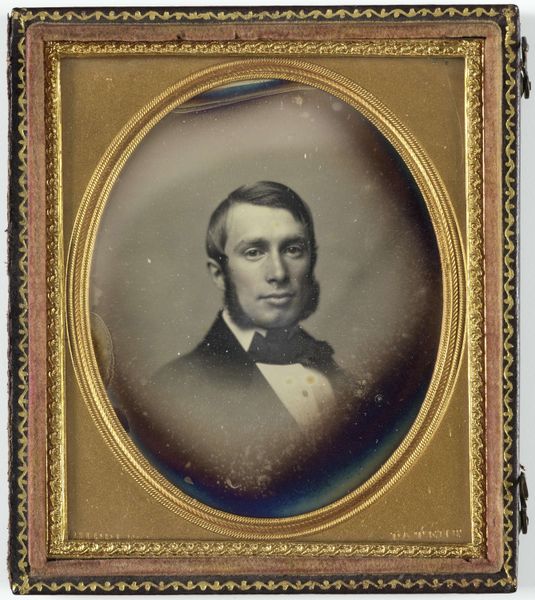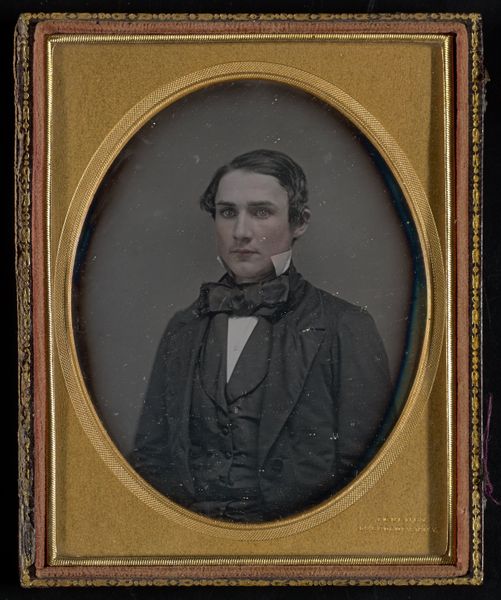
daguerreotype, photography
#
portrait
#
16_19th-century
#
daguerreotype
#
photography
#
coloured pencil
#
geometric
#
classicism
#
romanticism
#
men
#
united-states
#
realism
Dimensions: 8.2 × 7 cm (3 1/4 × 2 3/4 in., plate); 9.2 × 16 × 1 cm (open case); 9.2 × 8 × 1.6 cm (case)
Copyright: Public Domain
Curator: Here we have an anonymous daguerreotype from 1849, held at The Art Institute of Chicago, titled "Untitled (Portrait of a Man)." Editor: What strikes me is the somber quality of this image. It has this feeling of faded grandeur but there is also something very stark about its presentation. Curator: Indeed, that’s partly due to the daguerreotype process itself. Each plate was painstakingly created through a labor-intensive process that involved coating a silvered copper plate, exposing it to iodine fumes, and then developing it with mercury vapor. A true alchemic practice. The whole thing would be framed carefully as you see here to preserve it. Editor: Placing it in context of mid-19th century America, one can’t help but think about class, and how photography was becoming a means of solidifying and preserving the image of a burgeoning middle class. A very specific type of visibility emerges from that era. Curator: Absolutely, and considering the cost involved, a portrait like this would be a signifier of a certain socioeconomic standing. Also, the stiff pose—indicative of long exposure times—became fashionable, a mark of distinction in a society beginning to grapple with ideas around leisure and industriousness. We might also see the gold trim on this daguerreotype as another visual element of that socioeconomic message. Editor: I also can’t help but consider questions around who had access to such representation. The creation of these images also implies a creation of absence—the absence of representation for other groups. This photographic image becomes a kind of early mirror, one with specific distortions and privileges. Curator: And to bring it full circle, those socio-economic elements also influenced material choices. Daguerreotypes like this one are inherently archival—their materials carefully selected for preservation. This highlights their value not only as artistic objects, but as documents with embedded historical meaning. Editor: So as we consider the gentleman depicted here, perhaps we must also consider those whose likenesses weren't so easily—or even possibly—captured, which really re-centers the frame through which we look at history. Curator: I agree. This portrait is as much a window into the past as it is a material artifact that embodies specific societal values.
Comments
No comments
Be the first to comment and join the conversation on the ultimate creative platform.
